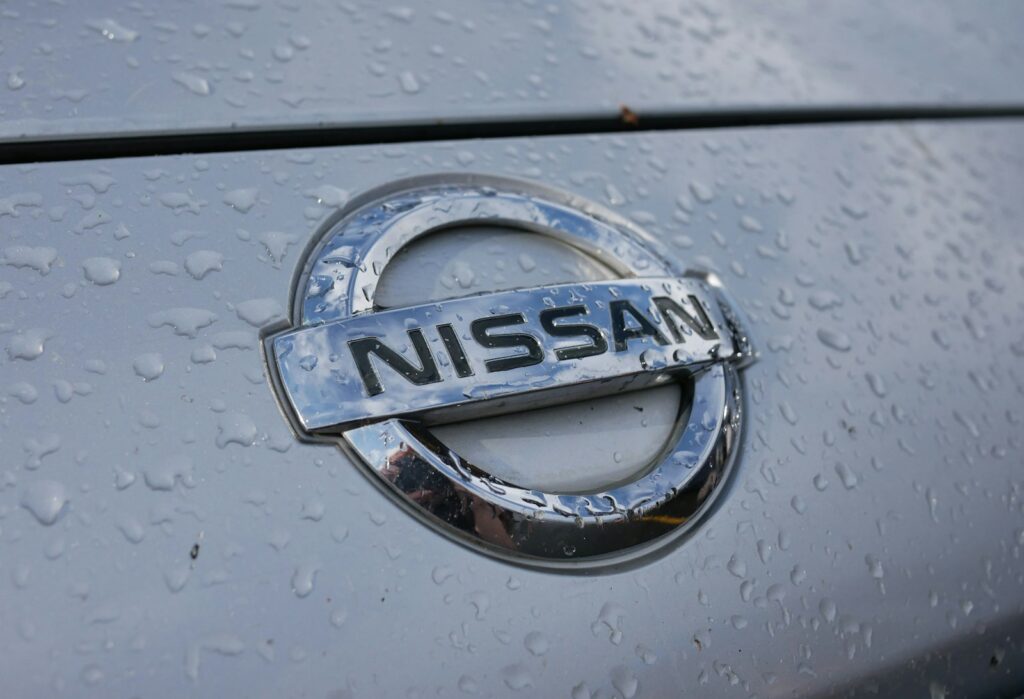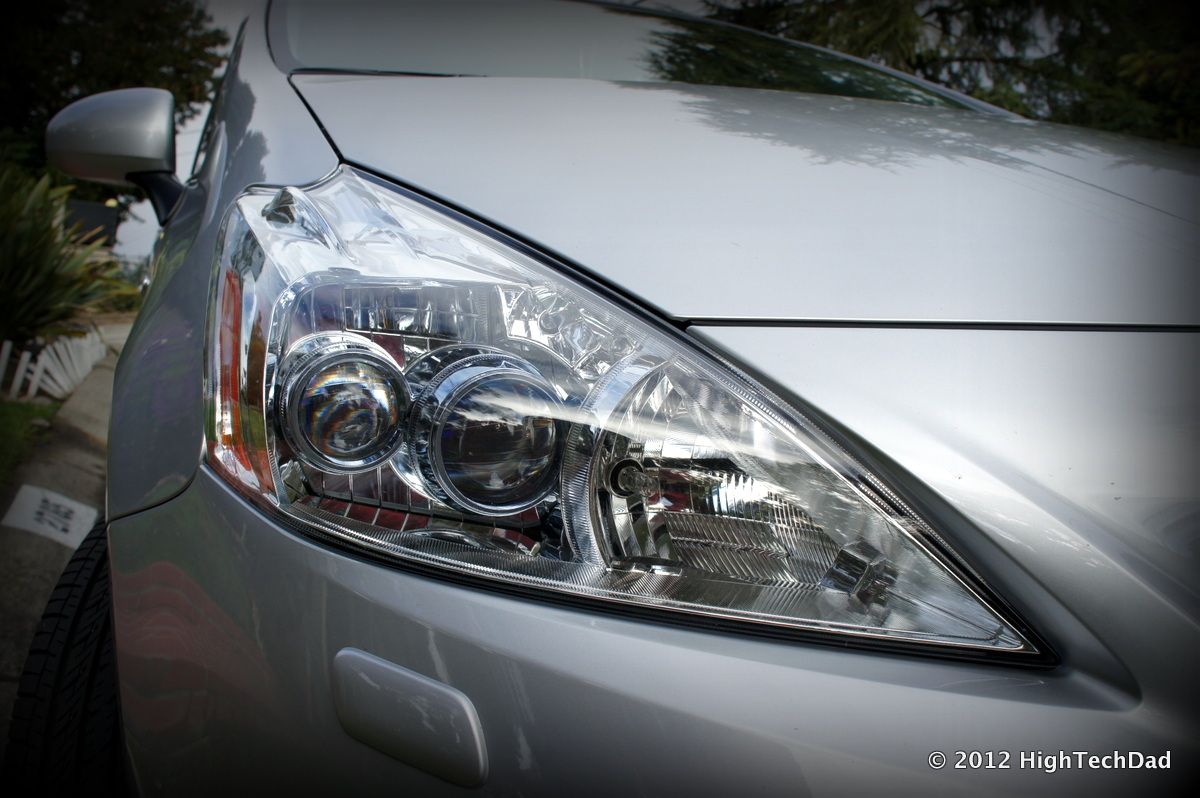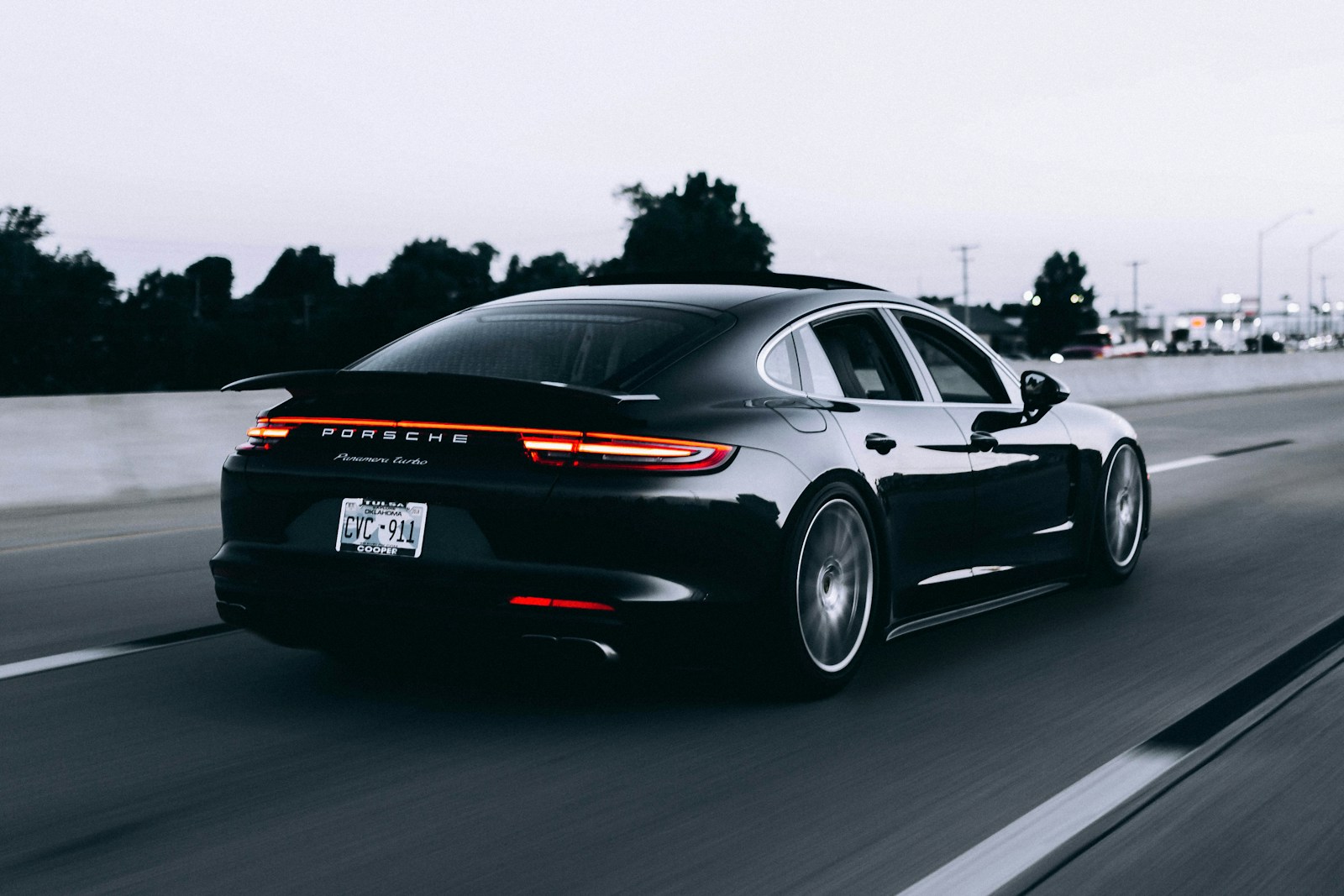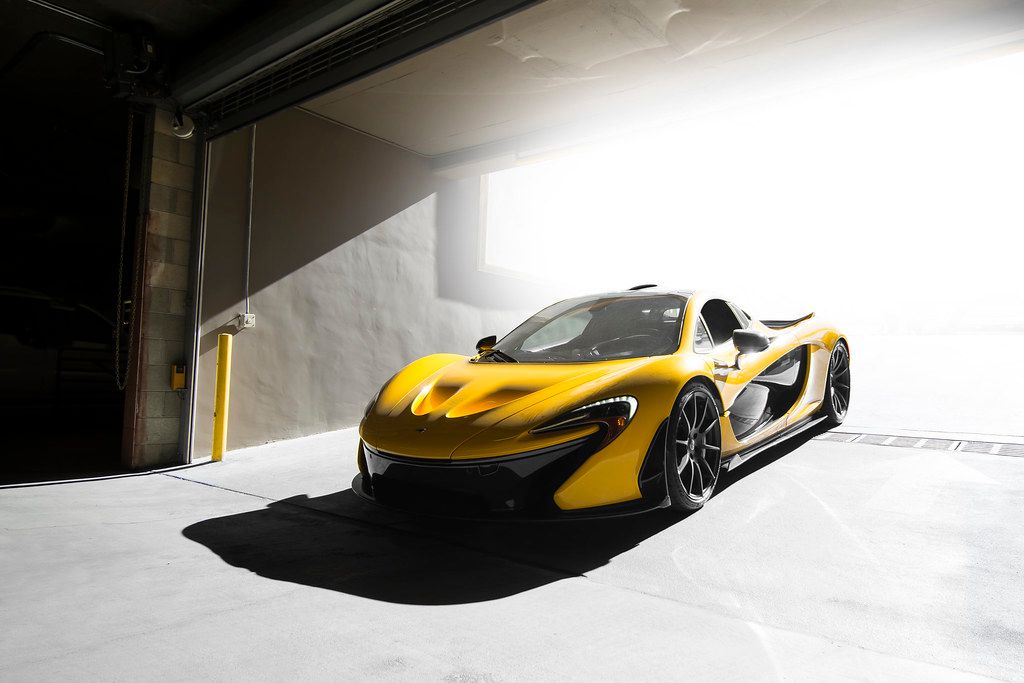
The allure of hybrid vehicles is undeniable, promising superior fuel efficiency, reduced emissions, and a smoother driving experience that appeals to a wide range of consumers. As these vehicles become an increasingly common sight on our roads, a persistent question surfaces, especially for those contemplating a used model: How truly reliable are hybrids, particularly once they’ve clocked over 100,000 miles? This question often centers around the most sophisticated and potentially costly component: the hybrid battery.
For years, misconceptions have clouded the reputation of hybrid batteries, with many believing they are destined for frequent and expensive replacements. However, advancements in hybrid technology have dramatically improved their longevity and overall reliability. Modern hybrid batteries are designed to last for many years and miles, often covered by robust manufacturer warranties, and in most cases, a full battery replacement isn’t even necessary; individual modules can be serviced to extend life. Our aim is to separate myth from reality, providing you with the fact-based information needed to make an informed decision about these complex yet efficient vehicles.
This in-depth report delves into the long-term reliability of hybrid vehicles, specifically focusing on their battery performance. We will examine distinct categories: those models whose batteries consistently demonstrate extraordinary endurance, often surpassing 300,000 miles, and those that regrettably tend to experience significant capacity loss much sooner, sometimes before even reaching the 100,000-mile mark. Understanding these contrasting outcomes is crucial for assessing long-term ownership costs, resale value, and overall user experience, helping you navigate the used hybrid market with confidence.
**Hybrid Batteries Lasting 300,000 Miles**
Hybrid technology has matured considerably over the years, leading to certain vehicles and their battery systems earning a sterling reputation for extraordinary endurance. For owners, this translates into the reassuring knowledge that their car’s battery can continue to perform strongly well past the standard warranty period, often for well over a decade without significant attention or costly repairs. This sustained reliability holds immense financial and practical benefits, particularly for high-mileage drivers.
Our focus on vehicles whose batteries consistently last up to 300,000 miles is driven by the significant population of high-mileage users, such as taxi drivers, ride-share operators, and commuters with extensive daily routes. For these drivers, the ability of a battery to maintain performance over such distances translates directly into substantial savings on fuel and maintenance, making these models exceptionally cost-effective. Highlighting these exemplars also serves to encourage best practices across the automotive industry, pushing all manufacturers to strive for similar benchmarks in durability and reliability. We now explore five specific models that have achieved this remarkable degree of resilience, providing valuable insights into what makes their hybrid batteries virtually legendary.
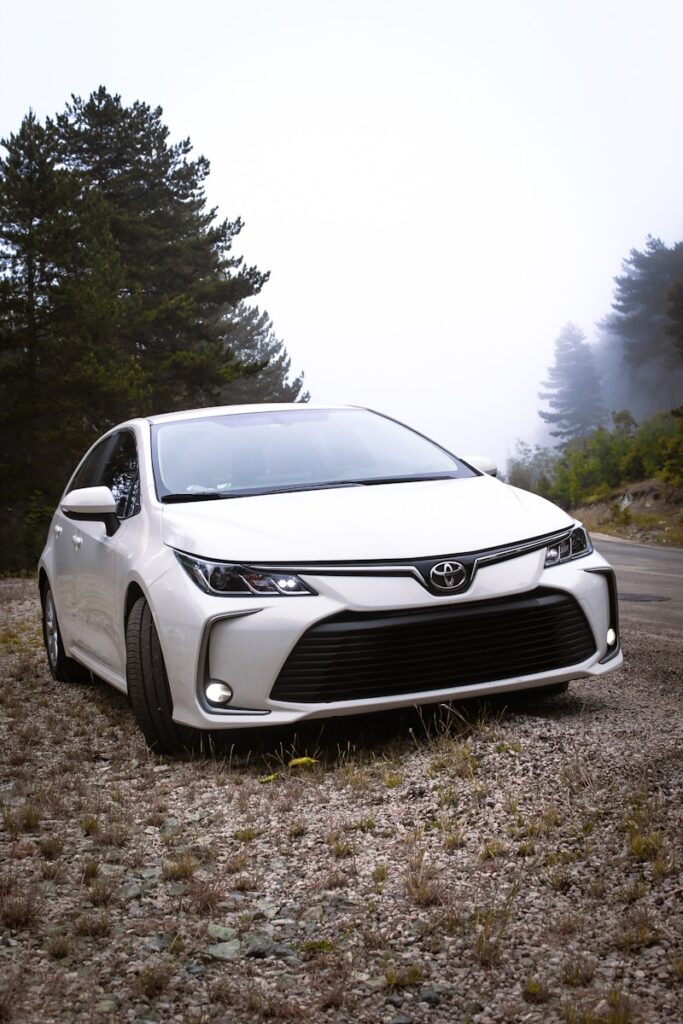
1. **Toyota Prius (Second and Third Generation)**The Toyota Prius is almost synonymous with hybrid reliability, and its battery longevity is a cornerstone of this reputation, frequently cited in automotive folklore. This iconic status is largely bolstered by its extensive adoption in taxi fleets across the globe, where vehicles are subjected to relentless daily use and accumulate monumental mileage figures. Drivers consistently report that their original hybrid batteries remain fully operational, sometimes reaching or even exceeding the impressive 300,000-mile mark, a testament to Toyota’s engineering prowess.
Several foundational elements contribute to the Prius’s exceptional battery endurance. Toyota’s engineering philosophy places a high priority on simplicity and efficiency, which is evident in its choice of a nickel-metal hydride (NiMH) battery. This battery chemistry has undergone rigorous refinement across numerous iterations, resulting in a robust and reliable power source. Critically, the Prius incorporates an effective thermal management system; its air-cooled battery pack is meticulously designed to prevent overheating, ensuring optimal performance in both scorching summer heat and frigid winter conditions.
Furthermore, Toyota has meticulously optimized the car’s Battery Management System (BMS) to meticulously control the battery’s operational parameters. The BMS is programmed to avoid extreme cycling, meaning the battery is rarely allowed to reach a full charge or undergo a deep discharge. This conservative approach significantly reduces stress and internal wear on the battery cells, thereby extending their overall lifespan. The Prius’s moderate weight and its deliberately unaggressive tuning also play a role, further decreasing the electrical strain placed upon the battery system during everyday driving.
Real-world testimonials, particularly from operators of high-mileage taxi fleets, consistently reinforce the Prius’s reputation for reliability. These professional drivers, whose livelihoods depend on vehicle uptime and low operating costs, frequently report that battery replacement is an exceedingly rare event, typically only becoming a consideration at exceptionally high mileages. While strong factory warranties provide peace of mind in the initial years of ownership, it is the remarkable, real-world longevity of its battery that firmly establishes the Prius as a standout in the realm of hybrid reliability and a benchmark for others to aspire to.
Car Model Information: 2015 Toyota Prius Two
Name: Toyota Prius
Caption: Fifth generation Prius (XW60)
Manufacturer: Toyota
Production: December 1997 – present
ModelYears: 2001–present (US)
Class: ubl
BodyStyle: unbulleted list
Layout: unbulleted list
Sp: uk
Categories: 2000s cars, 2010s cars, 2020s cars, All-wheel-drive vehicles, All Wikipedia articles in need of updating
Summary: The Toyota Prius ( PREE-əss) (Japanese: トヨタ・プリウス, Hepburn: Toyota Puriusu) is a compact/small family liftback (supermini/subcompact sedan until 2003) produced by Toyota. The Prius has a hybrid drivetrain, which combines an internal combustion engine and an electric motor. Initially offered as a four-door sedan, it has been produced only as a five-door liftback since 2003.
The Prius was developed by Toyota to be the “car for the 21st century”; it was the first mass-produced hybrid vehicle, first going on sale in Japan in 1997 at all four Toyota Japan dealership chains, and subsequently introduced worldwide in 2000.
In 2011, Toyota expanded the Prius family to include the Prius v, an MPV, and the Prius c, a subcompact hatchback. The production version of the Prius plug-in hybrid was released in 2012. The second generation of the plug-in variant, the Prius Prime, was released in the U.S. in November 2016. The Prius family totaled global cumulative sales of 6.1 million units in January 2017, representing 61% of the 10 million hybrids sold worldwide by Toyota since 1997. Toyota sells the Prius in over 90 markets, with Japan and the United States being its largest markets.
Get more information about: Toyota Prius
Buying a high-performing used car >>>
Brand: Toyota Model: Prius
Price: $8,995 Mileage: 139,989 mi.
Read more about: The Automotive Hall of Shame: 15 Infamous Rides and Their Reputations for Bad Drivers and Dangerous Flaws

2. **Honda Accord Hybrid (2014–2017)**The second-generation Honda Accord Hybrid, specifically models from 2014 to 2017, stands out as another prime example of a vehicle equipped with batteries engineered for extraordinary endurance. This particular iteration marked a significant turning point for Honda, as its earlier Integrated Motor Assist (IMA) hybrids occasionally faced issues with premature battery wear. With the introduction of the Intelligent Multi-Mode Drive (i-MMD) system in this Accord Hybrid, Honda successfully turned the page, delivering a truly robust and long-lasting hybrid solution.
At the heart of this system is a high-voltage lithium-ion battery, which benefits from several crucial improvements. Enhanced cooling mechanisms, coupled with a more advanced energy management algorithm, ensure that the battery operates within optimal thermal boundaries. Crucially, the powertrain is meticulously designed to operate the battery within mild state-of-charge windows. This careful, gentle cycling dramatically reduces the frequency of deep charge-discharge cycles, which are well-known to be primary accelerators of battery degradation over time, thus preserving battery health.
Another significant factor contributing to the impressive longevity of the Accord Hybrid batteries is their strategic physical placement within the vehicle. The battery pack is located in a position that effectively shields it from excessive heat exposure and direct contact with road elements, further mitigating environmental stresses. Owners who primarily utilize the Accord Hybrid for long commutes and extensive highway driving frequently report achieving considerably higher mileages before experiencing any noticeable loss in battery capacity. This is largely because consistent operation at optimal temperatures is much easier for the battery in such steady driving conditions.
Furthermore, Honda’s innovative powertrain approach for this model places a substantial reliance on the electric motor during low and moderate speeds. This design choice not only optimizes energy usage but also simultaneously enhances overall efficiency and significantly extends the battery’s lifespan. Although this particular model might not have always garnered the high-profile attention of the Toyota Prius, it is highly regarded among hybrid enthusiasts for its ability to cover extraordinary distances on its original battery, making it an eminently suitable choice for consumers looking to maximize their investment in a used hybrid vehicle.
Car Model Information: 2022 RAM 2500 Power Wagon
Name: Honda Accord
Caption: 2023 Honda Accord LX (US)
Alt: Front three-quarter view of a front-engined four-door car.
Manufacturer: Honda
Production: 1976–present
Class: Compact car
BodyStyle: hatchback
Layout: Front-engine, front-wheel-drive layout
Predecessor: Honda 1300
Categories: 1980s cars, 1990s cars, 2000s cars, 2010s cars, 2020s cars
Summary: The Honda Accord (Japanese: ホンダ・アコード, Hepburn: Honda Akōdo; ), also known as the Honda Inspire (Japanese: ホンダ・インスパイア, Hepburn: Honda Insupaia) in Japan and China for certain generations, is a series of automobiles manufactured by Honda since 1976, best known for its four-door sedan variant, which has been one of the best-selling cars in the United States since 1989. The Accord nameplate has been applied to a variety of vehicles worldwide, including coupes, station wagons, hatchbacks and a Honda Crosstour crossover.
Get more information about: Honda Accord
Buying a high-performing used car >>>
Brand: Honda Model: Accord Hybrid
Price: $52,495 Mileage: 38,311 mi.
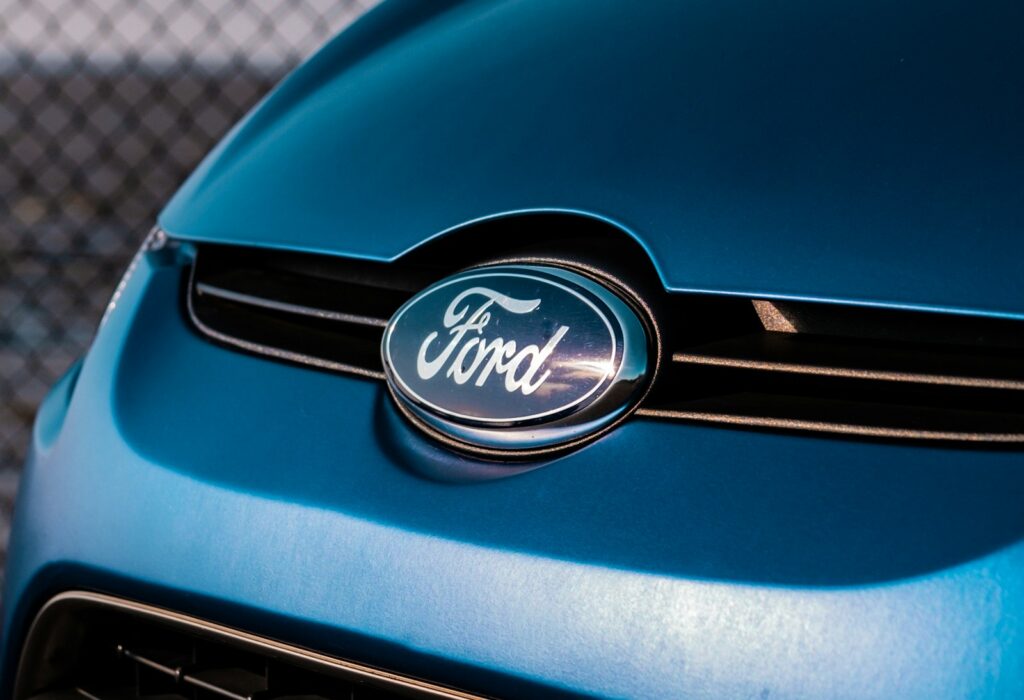
3. **Ford Escape Hybrid (2005–2012)**The first-generation Ford Escape Hybrid, produced between 2005 and 2012, was a trailblazer for American automakers in the hybrid segment. This pioneering SUV demonstrated convincingly that hybrid batteries could robustly endure the challenging, high-stress conditions of continuous stop-and-go driving prevalent in urban environments. Its widespread adoption by taxi services, particularly in bustling cities like New York, provided compelling real-world evidence of its durability.
Numerous Escapes operating in demanding fleet services were meticulously documented, often running between 250,000 and 350,000 miles before their owners needed to even consider the prospect of battery replacement. This impressive feat was, in part, a payoff from Ford’s strategic decision to utilize a nickel-metal hydride (NiMH) battery chemistry, which, at the time, proved to be more mature and reliable than some nascent lithium technologies. This choice proved to be a critical factor in the vehicle’s long-term success and dependability.
A key engineering advantage of the Escape Hybrid is its sophisticated liquid cooling system. This system is instrumental in moderating the temperatures of the battery cells, effectively reducing the risk of overheating—a factor widely recognized as a leading cause of premature battery degradation. Additionally, Ford’s advanced control systems were meticulously engineered to carefully regulate the battery’s state of charge, further contributing to the overall health and extended longevity of the battery pack, ensuring it operates within safe parameters.
What truly distinguishes this vehicle in discussions about hybrid battery longevity is the extensive, verifiable data derived from its intensive fleet use. These vehicles are operational almost constantly and frequently subjected to harsh, demanding treatment. Even under such arduous conditions, the Escape Hybrid’s battery consistently maintained effective performance, a fact that speaks volumes for its durability, particularly for private owners who are likely to subject their vehicles to less extreme usage. Ford also designed the vehicle with the foresight for relatively easy battery service when necessary, which further minimized long-term costs for high-mileage users. This unique combination of durability, reliability, and serviceability in the Escape Hybrid battery system unequivocally establishes it as a clear benchmark for expectations in the field of hybrid longevity.
Car Model Information: 2022 RAM 2500 Power Wagon
Name: Ford Escape
Caption: 2021 Escape Hybrid (US)
Manufacturer: Ford Motor Company
Aka: Unbulleted list
Production: 2000–present
ModelYears: 2001–present
Class: Compact crossover SUV
BodyStyle: SUV
Layout: Unbulleted list
Predecessor: Nissan Terrano II
Successor: Ford Territory (China)
Categories: 2010s cars, 2020s cars, All-wheel-drive vehicles, All Wikipedia articles written in American English, All articles with dead external links
Summary: The Ford Escape is a compact crossover SUV manufactured and marketed by the Ford Motor Company since the 2001 model year. The first Ford SUV derived from a car platform, the Escape fell below the Ford Explorer in size; the Escape was sized between the Ford EcoSport and Ford Edge. The 2005 model year Ford Escape Hybrid was the first hybrid-electric vehicle from Ford, and the first hybrid produced as an SUV.
The first two generations of the Escape used the Ford CD2 platform (jointly developed with Mazda), leading to the release of the rebadged variants, the Mazda Tribute and Mercury Mariner; as with the Escape, both the Tribute and Mariner were marketed in North America (the Mariner was never marketed in Canada). In Europe, the Escape was initially branded as the Ford Maverick from 2001 to 2008 (replacing a Nissan-produced SUV).
Under the mid-2000s “One Ford” globalization strategy, the third and fourth-generation designs of the Escape have been unified with the Ford Kuga, designed by Ford of Europe. Sharing a common body and chassis underpinnings (and several engines), the Escape and Kuga are manufactured in their home markets. As with previous generations, the fourth-generation Escape is offered with gasoline, hybrid, and plug-in hybrid options. Outside of North America, the Ford Escape is marketed in Australia, China, and Taiwan.
In August 2025, it was announced that Ford will be discontinuing the Escape after the 2026 model year.
Get more information about: Ford Escape
Buying a high-performing used car >>>
Brand: Ford Model: Escape Hybrid
Price: $52,495 Mileage: 38,311 mi.
4. **Lexus RX 400h/RX 450h**Lexus, the luxury division of Toyota, successfully translated its sterling reputation for high-quality engineering and meticulous craftsmanship into the hybrid sector with its distinguished RX series. Both the RX 400h and its successor, the RX 450h, utilized sophisticated hybrid battery systems that were intelligently derived from Toyota’s already proven technology, but they were specifically optimized to meet the demands of heavier, more powerful luxury SUVs. These vehicles seamlessly blend comfort and opulence with remarkable hybrid performance and, crucially, exceptional battery longevity.
In line with Toyota’s established practices, Lexus vehicles in this series typically employed robust nickel-metal hydride (NiMH) batteries, though some more recent models have transitioned to advanced lithium-ion chemistries. The RX series is celebrated not only for its luxurious cabin and refined driving experience but also for its highly praised battery system. Lexus integrated advanced cooling solutions tailored for its larger vehicles and meticulously engineered its hybrid system to operate the battery conservatively. This careful management approach ensures that the battery is never subjected to overuse or rapid cycling, practices that are known to significantly shorten a battery’s useful life.
Owners of these Lexus hybrid SUVs frequently report extraordinary battery performance, noting that it is not at all unusual for these vehicles to effortlessly accumulate between 250,000 and 350,000 miles before any discernible reduction in battery capacity becomes apparent. Testimonial evidence from various sectors, particularly from demanding airport limousine services that operate these vehicles continuously, provides ample real-world validation of their enduring performance. This intensive fleet usage underscores the inherent durability and reliability of the Lexus hybrid battery systems.
Furthermore, the RX hybrids benefit immensely from Lexus’s unwavering commitment to comprehensive post-sale support. The company’s strong warranty provisions, coupled with its pervasive emphasis on achieving long-term customer satisfaction, actively encourage owners to adhere to regular maintenance schedules. This proactive approach facilitates the early detection of any potential issues that, if left unaddressed, could compromise battery health over time. For discerning consumers seeking the pinnacle of hybrid reliability combined with premium features and an uncompromising luxury experience, the Lexus RX hybrids consistently earn a top-tier position on lists evaluating long-term value and dependable performance.
Car Model Information: 2022 RAM 2500 Power Wagon
Name: Lexus RX
Caption: Lexus RX 500h F Sport Performance (TALH17, Germany)
Manufacturer: Toyota
Aka: Toyota Harrier
Production: December 1997 – present
ModelYears: 1998–present
Class: unbulleted list
BodyStyle: SUV
Layout: unbulleted list
Chassis: Unibody
Successor: unbulleted list
Categories: 2000s cars, 2010s cars, 2020s cars, All-wheel-drive vehicles, All Wikipedia articles written in American English
Summary: The Lexus RX (Japanese: レクサス・RX, Hepburn: Rekusasu RX) is a luxury crossover SUV sold since 1998 by Lexus, a luxury division of Toyota. Originally released in its home market of Japan in late 1997 as the Toyota Harrier, export sales began in March 1998 as the Lexus RX.
Considered as the first luxury crossover SUV, five generations of the RX have been produced to date, the first being compact in size, and the latter classified as mid-size. Both front- and four-wheel drive configurations have been used on the RX series, and several gasoline powertrain options, including V6 engines and hybrid systems, have been offered. In the Lexus model lineup, the RX sits below the larger Lexus LX (marketed as the Toyota Land Cruiser body-on-frame SUVs outside North America, respectively), and below the body-on-frame, but also mid-size GX SUV. The name “RX” stands for “Radiant Crossover”. It has also been labelled as “Recreational Cross Country” in some markets. The RX’s current Toyota counterpart is the Highlander/Kluger; past counterparts included the Harrier and Venza.
The first-generation RX 300, fitted with a 3.0-liter V6 engine, began sales in 1998. The Japanese market Harrier released in 1997 also offered a 2.2-liter inline-four, later uprated to 2.4 liters. The second-generation RX 300 (3.0-liter V6) and RX 330 (3.3-liter V6) models went on sale in 2003, with both variants supplanted by the more powerful RX 350 (3.5-liter V6) in 2006. Like the previous series, a 2.4-liter inline-four engine was sold alongside the 3.0-liter V6 in the Japanese market Harrier. In 2005, a hybridized gasoline-electric version of the 3.3-liter second-generation model was made available as the RX 400h in export markets and as the Harrier Hybrid in Japan. For the third generation released in 2009, both RX 350 (3.5-liter V6) and RX 450h (3.5-liter V6 hybrid) models were initially offered, with an entry-level RX 270 (2.7-liter inline-four) offered by Lexus in some Asian markets, including in Japan, since 2010. Since the release of the third generation, Japanese sales have occurred under the RX name as opposed to Harrier as had been the case previously. In the fourth generation, a turbocharged (2.0-liter inline-four) RX 200t/300 model was introduced to replace the previous 2.7-liter unit.
The RX has been assembled at Toyota Motor Kyushu since launch. The RX and RX Hybrid were the first Lexus models to be built outside Japan, with North American market versions produced at the Toyota Motor Manufacturing Canada plant in Cambridge, Ontario beginning 2003 (RX) and expanded in 2014 (RX Hybrid). Hybrid transaxles are built at the Kokura plant in Kitakyushu, Fukuoka since 2009.
Get more information about: Lexus RX
Buying a high-performing used car >>>
Brand: Lexus Model: RX 450h
Price: $52,495 Mileage: 38,311 mi.
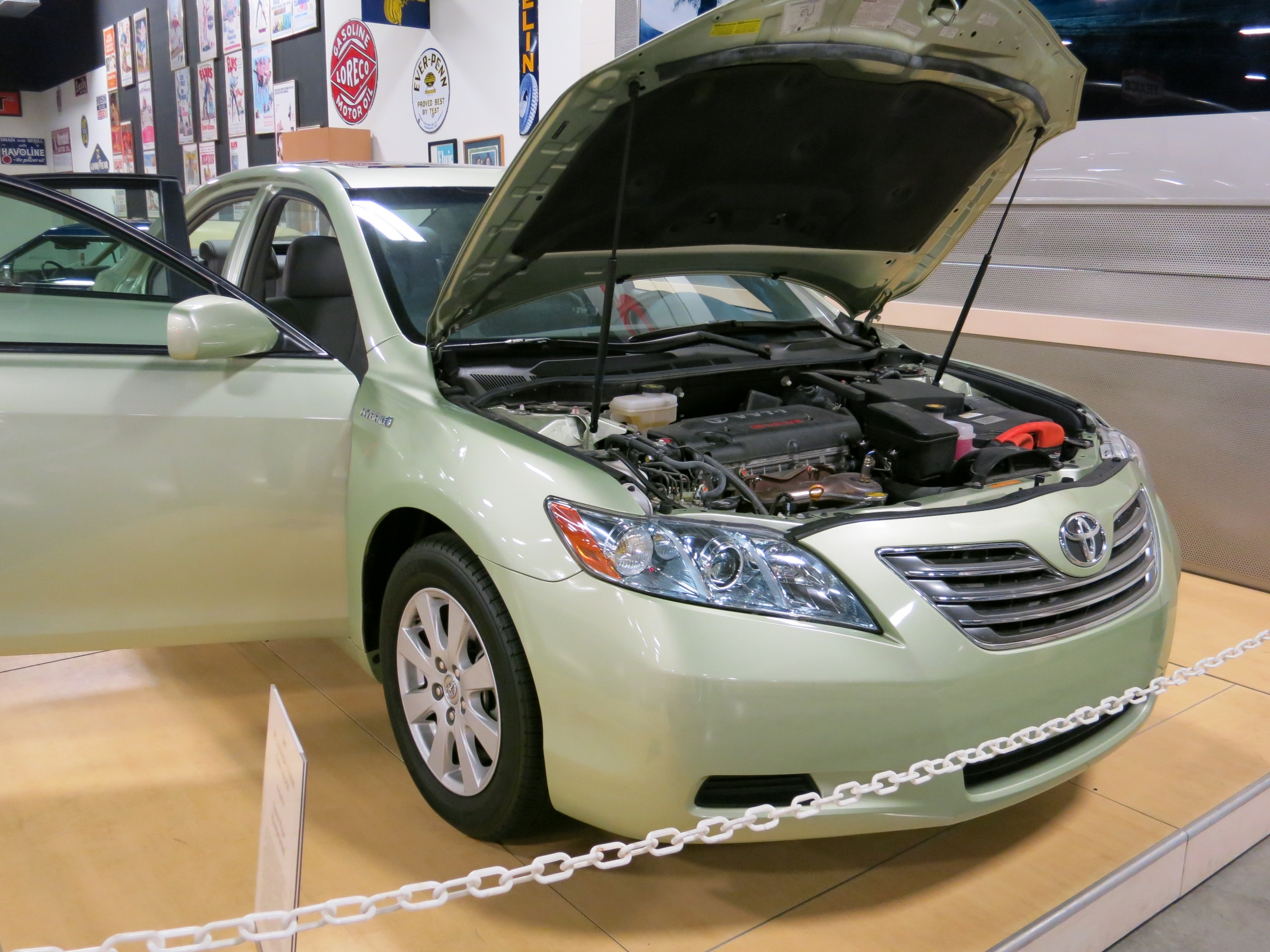
5. **Toyota Camry Hybrid (2007–2017)**The Toyota Camry Hybrid stands as a testament to consistency and reliability, completing our discussion of hybrid models that excel in battery longevity. Sharing a significant portion of its core hybrid technology with the highly successful Prius, the Camry Hybrid package presents this proven system within the familiar and widely popular format of a traditional sedan. Earlier models typically featured resilient nickel-metal hydride (NiMH) batteries, while more recent iterations have incorporated advanced lithium-ion (Li-ion) power packs, showcasing Toyota’s continuous evolution in hybrid engineering.
Often serving as a dependable family sedan or a workhorse in various fleet operations, the Camry Hybrid’s batteries have demonstrated a remarkable and consistent ability to deliver robust performance for hundreds of thousands of miles. This impressive longevity can be attributed to several key factors that are deeply embedded in Toyota’s hybrid design philosophy. These include Toyota’s extensively tested and refined battery control software, which meticulously manages power flow, coupled with strong thermal management systems designed to maintain optimal operating temperatures. Additionally, the robust construction of the battery cells themselves contributes significantly to their enduring performance.
Real-world testimonials from long-term owners and dedicated rideshare operators provide compelling evidence of the Camry Hybrid’s exceptional staying power. These accounts frequently detail instances where the original batteries maintain a healthy capacity well beyond the 200,000-mile mark, often approaching or even surpassing the formidable 300,000-mile threshold. Such consistent performance in demanding real-world conditions underscores the vehicle’s inherent durability and the effectiveness of its hybrid system over time, instilling confidence in its long-term viability.
Crucially, the Camry Hybrid also benefits from Toyota’s extensive and well-established dealer network. This network ensures that comprehensive battery health checks are routinely performed during scheduled regular servicing, allowing for proactive monitoring and maintenance. This, combined with Toyota’s inherently conservative approach to battery charging and discharging cycles, meticulously engineered to minimize stress on the cells, significantly reduces the risk of premature failure. The result is a consistently reliable, stress-free ownership experience for drivers, even after many years of regular and extensive use, reaffirming the Camry Hybrid’s status as a top contender for longevity and value.” , “_words_section1”: “1997
Hybrid Batteries That Drop Below 80% by 100,000 Miles
While many hybrids have achieved remarkable longevity, not all batteries perform to such high standards. Some struggle to retain capacity, losing more than 20% of their original charge before 100,000 miles. This capacity threshold often signals that replacement is warranted for modern hybrid batteries, leading to unexpected expenses and diminished resale value. Understanding the causes of premature battery degradation is crucial for current and future hybrid owners, influencing decisions about daily driving, climate control, and servicing. Identifying why certain models struggle can also push manufacturers to address weaknesses in newer generations. This section critically analyzes five hybrid models whose batteries are frequently reported to underperform in durability. Each case reveals unique contributing factors like aggressive battery cycling, suboptimal thermal management, or rushed technology implementation, offering essential insights for consumers navigating the used hybrid market.
Car Model Information: 2022 RAM 2500 Power Wagon
Name: Toyota Camry
Caption: 2018 Toyota Camry Ascent (ASV70, Australia)
Manufacturer: Toyota
Production: March 1982 – present
Aka: ubl
Class: ubl
Layout: ubl
Predecessor: ubl
Successor: Toyota Avensis (T250)
Categories: 1990s cars, 2000s cars, 2010s cars, 2020s cars, All-wheel-drive vehicles
Summary: The Toyota Camry (; Japanese: トヨタ・カムリ Toyota Kamuri) is an automobile sold internationally by the Japanese auto manufacturer Toyota since 1982, spanning multiple generations. Originally compact in size (narrow-body), the Camry has grown since the 1990s to fit the mid-size classification (wide-body)—although the two widths co-existed in that decade. Since the release of the wide-bodied versions, Camry has been extolled by Toyota as the firm’s second “world car” after the Corolla. As of 2022, the Camry is positioned above the Corolla and below the Avalon or Crown in several markets.
In Japan, the Camry was once exclusive to Toyota Corolla Store retail dealerships. Narrow-body cars also spawned a rebadged sibling in Japan, the Toyota Vista (トヨタ・ビスタ)—also introduced in 1982 and sold at Toyota Vista Store locations. Diesel fuel versions have previously retailed at Toyota Diesel Store. The Vista Ardeo was a wagon version of the Vista V50.
Get more information about: Toyota Camry
Buying a high-performing used car >>>
Brand: Toyota Model: Camry Hybrid
Price: $52,495 Mileage: 38,311 mi.
6. **Honda Civic Hybrid (2003–2008)**The Honda Civic Hybrid (early 2000s) was an early mainstream option, yet quickly developed a reputation for premature battery wear. Many owners reported over 20% capacity loss by or soon after 100,000 miles, a critical indicator of declining battery health.
This issue primarily arose from Honda’s Integrated Motor Assist (IMA) system. It aggressively cycled the nickel-metal hydride (NiMH) battery, prioritizing performance and fuel economy. This led to deeper, more frequent charge-discharge cycles that increased internal wear beyond the battery chemistry’s long-term capability.
Compounding this, the battery’s cooling system was not as robust as later designs, often allowing excessive heat buildup. High operating temperatures are a well-known accelerator of battery degradation, further shortening the NiMH cells’ lifespan. Owners frequently faced warning lights and expensive replacements.
Honda responded with extended warranties and software updates to alter battery management, but with mixed results. The early Civic Hybrid’s struggles underscore the critical importance of robust temperature control and careful battery management in hybrid vehicle systems.
Car Model Information: 2022 RAM 2500 Power Wagon
Caption: 2024 Honda Civic liftback
Manufacturer: Honda
Aka: ubl
Production: 1972–present
Class: Subcompact car
BodyStyle: fastback,Sedan (automobile)
Layout: Front-engine, front-wheel-drive layout,Front-engine, four-wheel-drive layout
Predecessor: Honda N600,Honda Z600
Categories: 1980s cars, 1990s cars, 2000s cars, 2010s cars, 2020s cars
Summary: The Honda Civic (Japanese: ホンダ・シビック, Hepburn: Honda Shibikku) is a series of automobiles manufactured by Honda since 1972. As of 2023, the Civic is positioned between the Honda Fit/City and Honda Accord in Honda’s global passenger car line-up. It is one of the best-selling automobiles in history, with over 27 million units sold through 2021.
The first-generation Civic was introduced in July 1972 as a two-door fastback sedan, followed by a three-door hatchback that September. With a 1,169 cc transverse engine and front-wheel drive, the car provided good interior space despite its small overall dimensions. Initially gaining a reputation for being fuel-efficient, reliable and environmentally friendly, later iterations have become known for performance and sportiness, especially the Civic Si, SiR, and Type R versions. It is currently in its eleventh generation, which has been produced since 2021.
The Civic has often been rebadged for international markets, and it served as the basis for the Honda CR-X, the Honda CR-X del Sol, the Concerto, the first generation Prelude, the Civic Shuttle (which later became the Orthia) and the CR-V (which in turn was used as the basis for the Honda FR-V).
Get more information about: Honda Civic
Buying a high-performing used car >>>
Brand: Honda Model: Civic Hybrid
Price: $52,495 Mileage: 38,311 mi.
Read more about: Unveiling Japan’s Automotive Crown Jewels: 15 Ultra-Rare Masterpieces for the True Enthusiast

7. **Ford Fusion Hybrid (2010–2012)**The Ford Fusion Hybrid (2010–2012) initially gained popularity as an affordable, fuel-efficient mid-size sedan. Despite its appeal, these specific model years began exhibiting a troubling tendency for premature battery capacity loss in many instances.
This model used a lithium-ion battery with a liquid cooling system, theoretically supporting extended life. However, early versions of Ford’s battery management software often allowed deeper, wider charge-discharge cycles than ideal, inadvertently increasing stress on the battery cells and accelerating degradation.
Real-world reports also detailed battery overheating, particularly on hot days or under sustained heavy use. Since Fusion Hybrids often navigated demanding urban stop-and-go traffic—a challenging environment—these conditions further contributed to accelerated wear and reduced longevity.
Ford did implement extended warranties for specific battery components in affected years. Nonetheless, these early Fusion Hybrids remain a cautionary tale. Their experience emphasizes how critical sophisticated software tuning and effective thermal management are in balancing performance with long-term battery health and cost-effectiveness.
Car Model Information: 2022 RAM 2500 Power Wagon
Name: Ford Fusion Hybrid
Manufacturer: Ford Motor Company
Production: 2008–2020
ModelYears: 2010–2020
Class: Mid-size car
Layout: FF layout
Assembly: Hermosillo, Sonora
BodyStyle: sedan (automobile)
Categories: All Wikipedia articles in need of updating, All articles containing potentially dated statements, All articles with dead external links, All articles with unsourced statements, Articles containing potentially dated statements from December 2016
Summary: The Ford Fusion Hybrid is a gasoline-electric hybrid powered version of the mid-sized Ford Fusion sedan manufactured and marketed by Ford, which had two generations. A plug-in hybrid version, the Ford Fusion Energi, was released in the U.S. in February 2013. The last model year for all Ford Fusions was 2020.
The first generation was launched to the U.S. market in March 2009 for model year 2010, together with its badge-engineered variants, the Mercury Milan Hybrid and the Lincoln MKZ Hybrid. The second generation was launched under the Ford and Lincoln brands for model year 2013, went on sale in the U.S. in October 2012.
The U.S. Environmental Protection Agency (EPA) rated the 2010 Ford Fusion Hybrid at 39 mpg‑US (6.0 L/100 km; 47 mpg‑imp) combined city/highway. The second generation hybrid improved the fuel economy rating to 42 mpg‑US (5.6 L/100 km; 50 mpg‑imp) for combined city/highway driving. The EPA rated the Energi’s combined city/highway fuel economy in all-electric mode at 88 miles per gallon gasoline equivalent (MPG-e) (2.7 L gasoline equivalent/100 km; 106 mpg-imp). In hybrid operation (charge-sustaining mode), the Energi has a combined fuel economy of 38 mpg‑US (6.2 L/100 km; 46 mpg‑imp).
The Fusion Hybrid won the 2010 North American Car of the Year Award, and the entire 2013 Ford Fusion line-up, including the Fusion hybrid and plug-in variants, won the 2013 Green Car of the Year. As of December 2016, over 285,000 units of the Fusion hybrid family were sold in the United States since 2009, including the plug-in hybrid variant. As of December 2016, sales of the Fusion Energi totaled 43,327 units delivered in its main market, the U.S.
Get more information about: Ford Fusion Hybrid
Buying a high-performing used car >>>
Brand: Ford Model: Fusion Hybrid
Price: $52,495 Mileage: 38,311 mi.
8. **Chevrolet Volt (First Generation, 2011–2015)**The first-generation Chevrolet Volt (2011–2015) was a pioneering plug-in hybrid praised for its substantial electric-only range. Yet, a subset of these early models experienced noticeable battery capacity drops, often exceeding 20% before reaching 100,000 miles.
The Volt’s large lithium-ion battery system features advanced active liquid cooling and heating. However, early models faced challenges with battery cell balancing and management software, leading to uneven aging among individual cells over time.
Extensive use of the electric range without frequent full charging cycles also contributed to diminished battery health. This highlights the interaction between sophisticated technology and user charging habits, where constant reliance on deeper capacity without regular recharges adds strain and accelerates wear.
Chevrolet responded with software updates and recalls to improve battery management. Despite these, some owners still reported capacity loss within the first few years. The Volt’s case underscores that even advanced plug-in hybrids are susceptible to battery wear, and user habits combined with precise system calibration profoundly influence longevity.
Car Model Information: 2011 Chevrolet Volt Base
Name: Chevrolet Volt
Caption: 2012 Chevrolet Volt
Manufacturer: General Motors
Production: November 2010 – February 2019
ModelYears: 2011–2019
Class: Compact car
BodyStyle: liftback
Layout: Front-engine, front-wheel drive
Designer: Jelani Aliyu
Categories: All Wikipedia articles written in American English, All articles containing potentially dated statements, All articles with dead external links, Articles containing potentially dated statements from August 2016, Articles containing potentially dated statements from February 2014
Summary: The Chevrolet Volt is an electric vehicle car that was manufactured by General Motors, and also marketed in rebadged variants as the Holden Volt in Australia and New Zealand and the Buick Velite 5 in China, and with a different fascia as the Vauxhall Ampera in the United Kingdom and as the Opel Ampera in the remainder of Europe. Volt production ended in February 2019. While similar in some ways to hybrid vehicles, the Chevy Volt is an electric car with an onboard gasoline generator.
Sales of the Volt began in the United States in mid-December 2010, followed by some European countries and other international markets in 2011. Global combined Volt/Ampera-family sales totaled about 177,000 units by the end of October 2018. The U.S. was the leading market, with 157,054 Volts delivered through the end of 2019, followed by Canada with 16,653 Volts sold through September 2018. Just over 10,000 Opel/Vauxhall Ampera cars had been sold in Europe as of June 2016. Until December 2018, the Volt/Ampera family of vehicles was the world’s bestselling plug-in hybrid vehicle. When it was discontinued, the Chevrolet Volt was still listed as the top-selling plug-in hybrid in the American market.
The Volt operates as a pure battery electric vehicle until its battery capacity drops to a predetermined threshold from full charge. From there, its internal combustion engine powers an electric generator to extend the vehicle’s range as needed. While running on gasoline at high speeds the engine may be mechanically linked (by a clutch) to the car’s gearbox, improving efficiency by 10% to 15%. The Volt’s regenerative braking also contributes to the on-board electricity generation. Under the United States Environmental Protection Agency (EPA) cycle, the 2013–15 model year Volt all-electric range is 38 mi (61 km), with a combined electric mode/gasoline-only rating of 62 mpg‑US (3.8 L/100 km; 74 mpg‑imp) equivalent (MPG equivalent).
The second-generation Volt’s improved battery system and drivetrain increased the all-electric range to 53 miles (85 km), its EPA-rated fuel economy in charge-sustaining mode to 42 mpg‑US (5.6 L/100 km; 50 mpg‑imp), and the combined city/highway fuel economy in all-electric mode to 106 MPG-e, up from 98 MPG-e. Deliveries to retail customers in the U.S. and Canada began in October 2015 as a 2016 model year.
The Volt won several awards, including the 2009 Green Car Vision Award, 2011 Green Car of the Year, 2011 North American Car of the Year, 2011 World Green Car, 2011 SAE Best engineered car, 2012 European Car of the Year, and 2016 Green Car of the Year.
Get more information about: Chevrolet Volt
Buying a high-performing used car >>>
Brand: Chevrolet Model: Volt
Price: $7,240 Mileage: 140,754 mi.
9. **Nissan Altima Hybrid (2011–2013)**The Nissan Altima Hybrid (2011–2013) offered hybrid tech in a conventional sedan. However, owners and service reports indicate its nickel-metal hydride (NiMH) battery pack often suffered premature degradation, losing over 20% capacity near the 100,000-mile mark.
A key factor was the Altima Hybrid’s passive air cooling system for the battery. This system was less effective at heat dispersal, especially in warmer climates or heavy urban traffic. Consistent heat buildup within the pack is a well-established cause of accelerated battery cell degradation.
Additionally, the vehicle’s hybrid system used relatively aggressive battery cycling protocols. While intended to maximize fuel economy, these inadvertently placed increased wear and tear on individual cells. This intense cycling combined with suboptimal heat management accelerated capacity loss.
The Altima Hybrid’s modest market presence also meant fewer available resources and aftermarket solutions for battery issues, complicating repairs. This example confirms that hybrid battery longevity varies significantly across brands, with effective thermal management remaining a pivotal design challenge.
Car Model Information: 2022 RAM 2500 Power Wagon
Name: Nissan Altima
Caption: 2024 Nissan Altima SR (L34; US)
Manufacturer: Nissan
Aka: Nissan Bluebird
Production: 1992–present
Class: Compact car
Predecessor: Nissan Bluebird,Nissan Stanza
ModelYears: 1993–present
Categories: 2000s cars, 2010s cars, 2020s cars, All-wheel-drive vehicles, All Wikipedia articles written in American English
Summary: The Nissan Altima is a mid-size car manufactured by Nissan since 1992. It is a continuation of the Nissan Bluebird line, which began in 1955.
The Altima has historically been larger, more powerful, and more luxurious than the Nissan Sentra but less so than the Nissan Maxima. The first through fourth-generation cars were manufactured exclusively in the United States and officially sold in North and South America, along with the Middle East and Australia. For other markets, Nissan sold a related mid-size sedan called the Nissan Teana which was between the Altima and Maxima in terms of size. In 2013, the Teana became a rebadged version of the fifth-generation Altima.
The name “Altima” was originally applied to a top trim line of the Nissan Leopard for the Japanese market in 1986, and then to the Nissan Laurel Altima mid-size car sold in Central America and the Caribbean before 1992. In 1992, Nissan discontinued the Stanza which was a Nissan Bluebird clone, replacing it with the US-built Altima, while remaining a compact car. The first Altima was produced in June 1992, as a 1993 model. All Altima models for the North American market were built in Smyrna, Tennessee, until June 2004, when Nissan’s Canton, Mississippi plant also began producing the model to meet high demand.
Get more information about: Nissan Altima
Buying a high-performing used car >>>
Brand: Nissan Model: Altima Hybrid
Price: $52,495 Mileage: 38,311 mi.
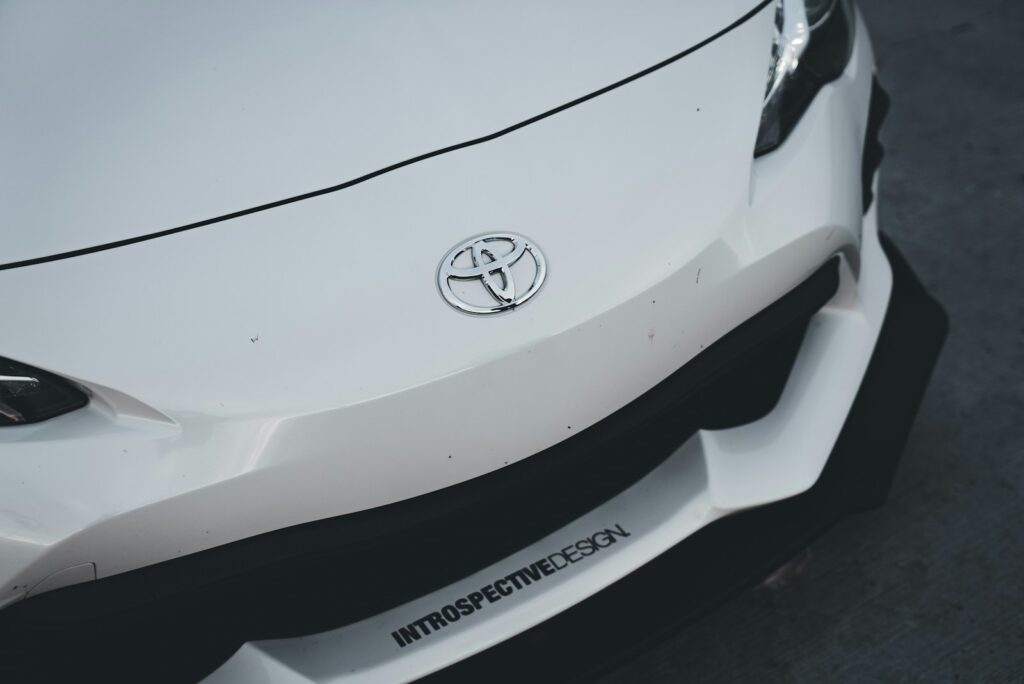
10. **Toyota Highlander Hybrid (First Generation, 2006–2013)**Toyota is renowned for hybrid reliability, but the first-generation Highlander Hybrid (2006–2013) presents a nuanced case. While many owners enjoyed long battery life, a significant proportion experienced capacity dropping below 80% around or even before 100,000 miles.
This highlights that even an exemplary manufacturer can face challenges in earlier iterations, particularly when adapting hybrid technology to larger, heavier platforms like an SUV. Less sophisticated thermal management systems in early designs, compared to later generations, may have played a role, as larger battery packs generate more heat.
Environmental conditions, such as extreme temperatures, significantly impact battery longevity. Aggressive driving and frequent hard acceleration also place extra strain. While Toyota generally designs for durability, specific usage patterns and environmental factors for a large family SUV might have exposed vulnerabilities in earlier battery management strategies, leading to varied outcomes.
For prospective buyers, this variability underscores the critical importance of thorough research into model-specific reliability ratings and common problems. Reviewing maintenance history and having the battery tested by a qualified technician is paramount. This diligent approach ensures buyers are fully informed about potential degradation, enabling a more confident purchasing decision.
Conclusion: Navigating the Hybrid Landscape with Confidence
As we conclude our exploration of hybrid battery longevity, the landscape is clearly complex. Our journey through models that defy expectations, delivering hundreds of thousands of miles, alongside those that falter prematurely, offers crucial lessons for prospective hybrid owners. The takeaway isn’t to avoid hybrid technology, but to approach the used market with a well-informed, discerning eye.
Car Model Information: 2022 RAM 2500 Power Wagon
Name: Toyota Highlander
Caption: 2022 Toyota Highlander Hybrid
Manufacturer: Toyota
Aka: unbulleted list
Production: 2000–present
ModelYears: 2001–present
Class: Mid-size crossover SUV
BodyStyle: SUV
Layout: unbulleted list
Chassis: Unibody
Categories: 2010s cars, 2020s cars, All-wheel-drive vehicles, All Wikipedia articles written in American English, All articles with dead external links
Summary: The Toyota Highlander, also known as the Toyota Kluger (Japanese: トヨタ・クルーガー, Hepburn: Toyota Kurūgā), is a mid-size crossover SUV with three-row seating produced by Toyota since 2000.
Announced in April 2000 at the New York International Auto Show and arriving in late 2000 in Japan and January 2001 in North America, the Highlander became one of the first car-based mid-size SUV or mid-size crossovers. The Highlander is the crossover counterpart to the more rugged, truck-based mid-size 4Runner and became Toyota’s best-selling SUV before being surpassed by the smaller RAV4 in 2006.
The first-generation model was sold in Japan as the Kluger, which was exclusive to a dealership network called Toyota Netz as a larger alternative to the RAV4. The Kluger nameplate is also used in Australia because “Highlander” is a trademarked trim line name owned by Hyundai. The name is derived from the German word klug, which means smart or clever (Klüger – with diacritics – means “someone who is smarter than another” in German).
Get more information about: Toyota Highlander
Buying a high-performing used car >>>
Brand: Toyota Model: Highlander Hybrid
Price: $52,495 Mileage: 38,311 mi.
Our analysis reinforces that while some manufacturers set gold standards through meticulous engineering and advanced thermal management, others have learned from costly lessons in aggressive cycling or suboptimal cooling. For a high-mileage hybrid to be truly reliable, diligent maintenance, responsible driving habits, and understanding a specific model’s design strengths and weaknesses are paramount. By reviewing vehicle history, scrutinizing maintenance records, and seeking expert battery assessments, consumers can confidently navigate options, ensuring their investment delivers promised fuel efficiency and a satisfying driving experience for many miles. The future of sustainable transportation is hybrid, and with the right knowledge, it can be a future embraced with complete peace of mind.

